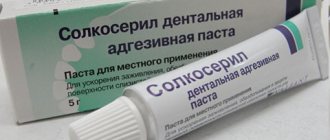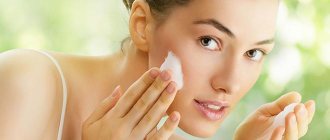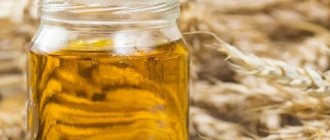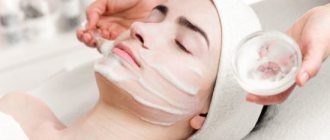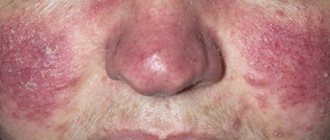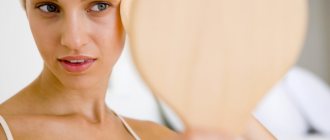What is Chlorhexidine?
This is one of the most effective external antiseptics. It has been used in various fields of medicine for more than 65 years. As an active component it contains chlorhexidine digluconate, a compound that is a cationic detergent, chemically close to hypoglycemic agents.
In small concentrations, the drug acts predominantly bacterio- and fungistatically. It interacts with surface phosphates of bacterial cells, reduces the permeability of their cytoplasmic membranes, shifts the osmotic balance, inhibits transport, reduces enzymatic activity and ATP levels. These effects are reversible.
With an increased content of chlorhexidine, bactericidal and fungicidal effects are observed. The drug causes irreversible changes in pathogen cells: destabilization of the cellular structure, loss of intracellular substance, crystallization and membrane rupture, which ends in the death of the microorganism.
Chlorhexidine bigluconate is effective against various pathogenic pathogens, including:
- streptococci;
- staphylococci, including methicillin-resistant strains;
- Escherichia coli and Pseudomonas aeruginosa;
- Treponema;
- chlamydia;
- gonococcus;
- ureaplasma;
- Gardnerella vaginalis;
- bacteroides;
- Trichomonas;
- yeast-like fungi, including the genus Candida.
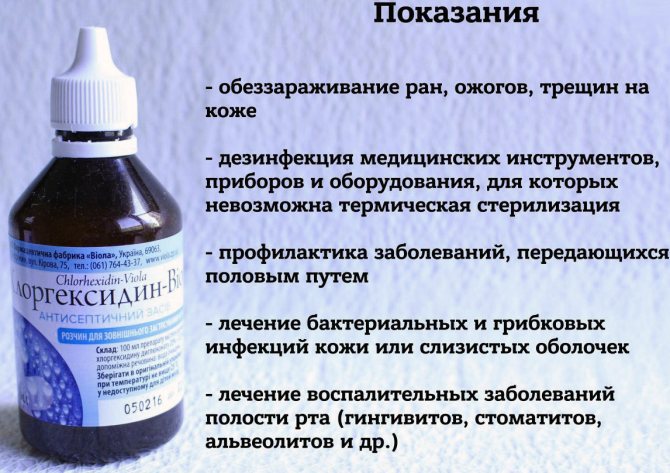
Useless in the fight against acid-fast microbes, may inhibit the development of bacterial spores. It is not an antiviral agent, but is capable of suppressing the activity of some viral agents (primarily herpes viruses types 1 and 2, influenza A pathogens, immunodeficiency virus), changing the parameters of their lipid membrane.
Pharmacological features of the drug:
- Does not have a systemic effect. When applied externally, no more than 5% enters the bloodstream.
- Exhibits surface-active properties.
- It continues to act in the presence of saliva, blood and purulent-inflammatory exudate, although in this case the activity of the drug may weaken slightly.
- The active component is able to bind to cells of the surface epithelium or mucous membrane and is gradually released.
- Has low toxicity. May cause hypersensitivity reactions.
Intended for external and local application.
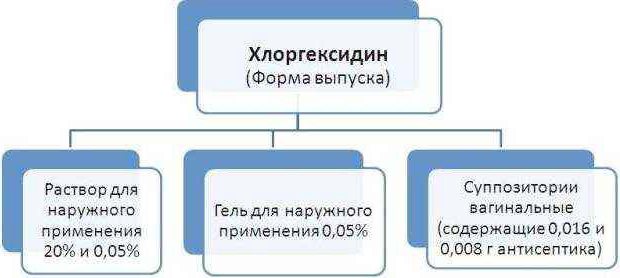
It is produced in the form of aqueous and alcoholic solutions of various concentrations, spray, gel, vaginal suppositories, and bactericidal adhesive plaster. Included in toothpastes, rinses and gels for gums, combination preparations, medicinal cosmetics, and shampoos for animals. It is used for disinfection of surfaces and instruments, treatment and prevention of dental, otolaryngological, urological, gynecological, dermatoveneral diseases, and in cosmetology practice.
Description
The drug is available in the form of alcohol and aqueous solutions of varying concentrations. For acne, the skin can be treated with 0.05% and 0.2% aqueous solution.
In appearance, the drug is a transparent, colorless or slightly yellowish liquid with slight opalescence. It can be with or without a smell.
Chlorhexidine has an antiseptic and disinfectant effect. Depending on the concentration, it can cause the death of pathogenic microorganisms or stop their growth. The substance is active against viruses, gram-positive and negative bacteria.
Beneficial properties of the drug for the skin
Chlorhexidine destroys pathogens on the surface and in the thickness of the skin without damaging the tissue structure. It has a great depth of penetration and is found in the subcutaneous fat layer. After a single application on the skin surface, it retains antibacterial activity for more than 6 hours. The medication prevents infection of body lesions and can prevent the appearance and eliminate unpleasant foot odor.
Thanks to its bactericidal properties, it has an anti-inflammatory effect, eliminating pustules, inflammatory redness, swelling, and pain. It behaves like a surfactant, helping to cleanse clogged pores and wound surfaces from purulent formations, necrotic elements, bacterial particles and toxins. It does not interfere with the epithelization process, thanks to which scars and spots after acne or acne are less likely to remain.

Indications for use
In cosmetology, products containing chlorhexidine are used for therapeutic and prophylactic purposes. Indications for use are:
- acne, including subcutaneous acne;
- blackheads, blackheads, acne;
- acne-like dermatoses (rosacea, perioral dermatitis, etc.);
- impetigo;
- pyoderma;
- mycoses;
- skin treatment before and after facial cleansing, hair removal, peeling, injection procedures, piercing;
- washing abrasions, scratches, cracks, burns, ulcers, bedsores.
The solution is also used to treat the surface of hands, tools and equipment before mechanical and hardware cleaning.
Expert opinion
In cosmetology, this drug is used mainly for disinfecting the skin after cleansing the face or removing pustules. Experts leave mostly positive reviews for this drug, noting that it copes well with its tasks and indeed demonstrates high efficiency in the fight against various microorganisms.
At the same time, experts note that it is very important to use this medicine correctly, otherwise it can harm a person, for example, burn the skin of the face. Cosmetologists advise strictly following the instructions for using this product, without relying on reviews from other consumers. They assure that only in this case will consumers be able to avoid the unpleasant consequences of its use.
Contraindications and possible side effects
In most cases, the drug is well tolerated. Sometimes unwanted reactions appear:
- hyperemia;
- skin itching;
- allergic rash, eczema;
- feeling of skin tightness;
- peeling;
- drying out and discoloration of the treated areas.
Sometimes there is the appearance of new acne, and after discontinuation of the drug, an increase in the activity of the sebaceous glands. Photosensitivity reactions are possible, so do not apply the product before going outside or use UV protection. After applying the gel, there may be a sticky feeling that goes away within a few minutes.
The medication should not be used in case of individual intolerance, a tendency to allergic reactions, dry skin, any type of dermatitis, eczematous lesions, dermatological diseases of a viral nature, as well as for washing the eyes, ear canals, and treating acne in children under 12 years of age. During pregnancy and breastfeeding, its use, including for cosmetic purposes, is allowed after consultation with a doctor.
To treat facial skin, use diluted solutions with a concentration of the active substance of 0.01% or 0.05%, sometimes 0.1%. They should not be applied together with iodine, soda, or boric acid. The use of soap and other detergents, colloids, and gum arabic leads to the inactivation of Chlorhexidine and the loss of its beneficial properties.
If the drug gets into your eyes, rinse them with running water as quickly as possible. Afterwards it is recommended to instill albucid. In case of accidental ingestion, gastric lavage is performed and sorbent is taken. Alcohol spray should not be sprayed near open flames or operating electrical heating devices.
Is it possible to wipe your face every day?
In cases where acne and pimples appear on the face, especially during adolescence, a teenager may wonder whether it is possible to wipe the face with chlorhexidine. If this problem occurs, not everyone will receive a dermatologist’s recommendation for the use of chlorhexidine as a cosmetic product.
The skin of the face becomes contaminated when decay products of most types of bacteria and microorganisms that cause the process of decay enter the pores. By squeezing pimples, infected particles can be brought inside, and then they can spread through the blood throughout the body and cause complications.
If the causes of the rash are other, for example, demodicosis (damage to the epidermis by skin mites) or infection, then chlorhexidine will not be a panacea. This requires other treatment prescribed by a doctor.
Cosmetologists recommend using an antiseptic to wipe the entire surface of the face only if there are multiple pustular rashes. But, as with any other medicine, you should not be overzealous.
Advantages and disadvantages
Chlorhexidine effectively removes microorganisms from the surface of the skin. It acts quickly, preventing infection or speeding up recovery. Its repeated use does not contribute to the development of pathogen resistance.
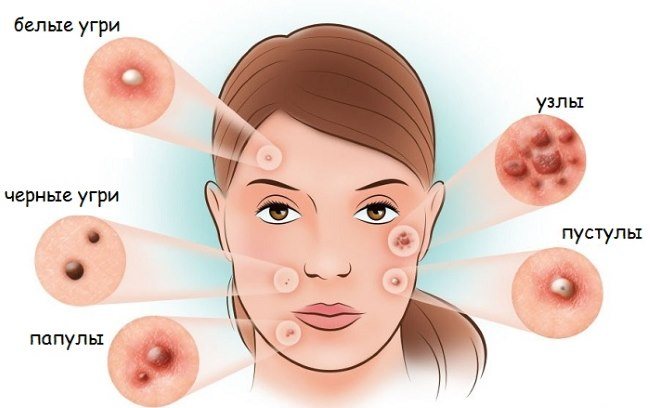
Compared to other disinfectants, the solution has a number of advantages:
- Almost completely odorless.
- Quickly absorbed.
- Does not leave marks on the skin, does not stain clothes.
- Does not cause discomfort when applied. Has low cytotoxicity.
- Characterized by prolonged action.
- It is well tolerated and, when used correctly, does not dry out the skin.
- It has a minimum of contraindications and side effects.
It is an analogue of Miramistin, but costs several times less.
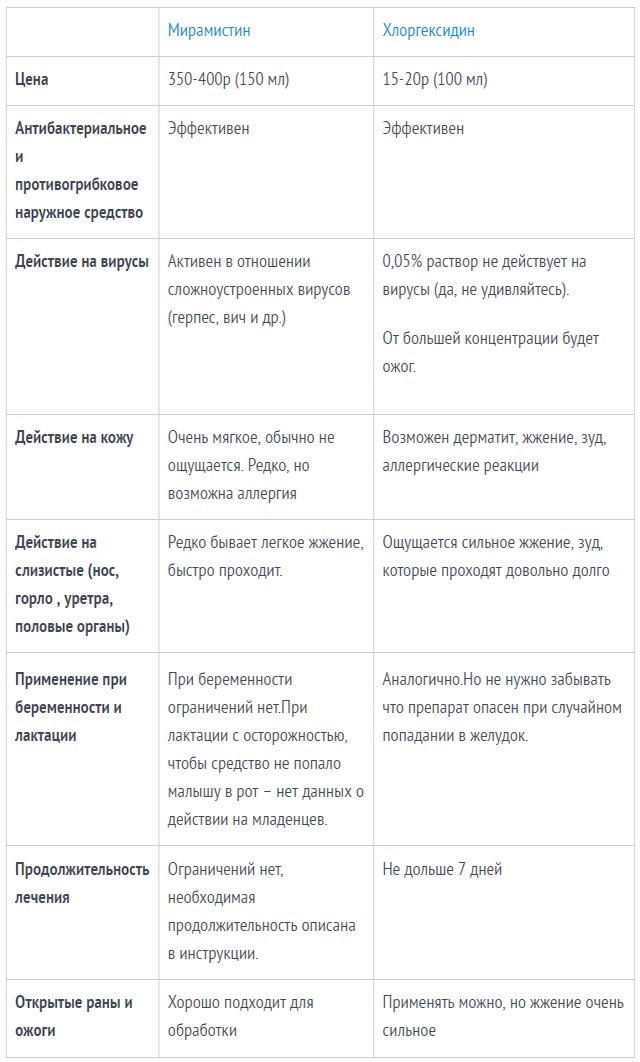
Although the drug does not accumulate in tissues, is not addictive and does not enter the systemic circulation, it should not be used on an ongoing basis. This leads to an imbalance of the natural microflora and disruption of the osmotic parameters of the skin, which is fraught with various unpleasant consequences, including the appearance of new rashes. Therefore, you can wipe your skin with it every day for no more than 10-14 days in a row.
For the prevention or treatment of moderately inflamed areas and minor damage, the product can be used independently, following the instructions for use. In other cases, you need to consult a specialist.
How to use the product correctly
Also different is that the substance does not cause a burning sensation, if the drug comes into contact with an open wound, it does not leave marks on the skin, healing does not slow down and scars do not form.
The principle of action of chlorhexidine
Chlorhexidine is applied externally. It has both an antiseptic and bactericidal effect. The activity of the drug is manifested against most pathogenic microorganisms and prevents the growth and ability of fungal microflora to reproduce.
The concentration of an alcoholic or aqueous solution of chlorhexidine determines what effect it will have on the human body. A solution with a 0.01% concentration has a bacteriostatic and bactericidal effect. This solution effectively helps to destroy bacteria and prevents the spread of pathogenic microflora.
Application in cosmetology
The scope of application of chlorhexidine for cosmetic purposes is quite extensive. Most often it is used in the treatment of acne and various pustular lesions. But you should figure out whether everyone can use chlorhexidine to wipe their face.
Unidox for acne
Ovarian inflammation symptoms
Based on the available reviews on the use of the drug, we can conclude that if used correctly, everyone can achieve an excellent antiseptic effect. From its influence, bacteria and harmful microorganisms lose their ability to multiply and fester.
Chlorhexidine can be used in different ways, depending on the skin problem.
Acne treatment
There are certain rules for treating single pimples located on the face:
- do not use soap and disinfectants when washing;
- do not use skin cleansing products in the form of scrub, tonic or others;
- moisten a cotton pad with a 0.01% chlorhexidine solution and press it onto the pimple;
- rinse off the product with cool water;
Face cleaning
When performing mechanical facial cleansing yourself, first of all, you need to make sure that the procedure is carried out sterilely. Chlorhexidine with a concentration of 0.01% is excellent for this purpose.
To cleanse your face, you must do the following:
- Wash thoroughly with clean water.
- Disinfect hands with chlorhexidine.
- Moving from the edges of the pimple to its central part, wipe the area near the pustule with an antiseptic.
- Carefully pierce the pimple with a needle from a disposable syringe and break the skin over the pustule.
- Soak a cotton pad in chlorhexidine and gently collect the released pus.
- Gently treat the area around the abscess with an antiseptic.
- Make applications with chlorhexidine solution 2 times a day for 10 minutes, and then apply Levomikol ointment.
To solve the above problems, an effective remedy is to apply cosmetic masks containing chlorhexidine to the face.
For example, using a mask using black clay, you can perfectly get rid of acne and reduce oily skin on your face.
How to properly store chlorhexidine
The healing properties of chlorhexidine last longer if the following storage conditions are met:
- It must be stored in a locked place, out of reach of children.
- The temperature where the medicine is stored should be no higher than 25 degrees.
- After use, the container with the medicine should be closed immediately.
- Do not heat chlorhexidine and bring it to a boil.
- Direct sunlight should not fall on the container with the medicine.
Important to remember! Uncontrolled use of chlorhexidine can cause side effects such as itching, flaking and tightness of the skin. New rashes may appear.
It is very important to strictly follow the rules for using the drug, control its dosage and use it according to the recommendations of the attending physician.
To enhance the effect of chlorhexidine, the following medications are prescribed in combination with drugs that contain antibiotics:
- chloramphenicol;
- cephalosporin;
- neomycin;
- kanamycin.
Chlorhexidine increases its bactericidal effect when used in combination with ethyl alcohol.
It is not used together with drugs containing the following acids:
- citrates;
- sulfates;
- borates;
- phosphates;
- chlorides;
- carbonates.
Cannot be used in combination with any other antiseptic.
Methods of use for the face
The following dosage forms of Chlorhexidine are used for cosmetic purposes:
- solution;
- aerosol;
- gel;
- cream;
- ointment.
An aqueous solution can be added to home care products (masks, scrubs, emulsions, etc.).
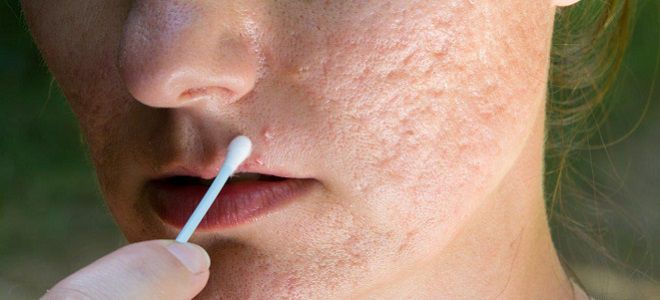
The antimicrobial effect of the drug is enhanced in combination with ethyl alcohol and when heated, however, boiling of the liquid should be avoided, as this will lead to destruction of the structure of the active component. The parallel use of other antiseptics is undesirable; in this case, the risk of drying out the skin increases.
In case of severe pathology and severe inflammation, Chlorhexidine for acne can be used only after consultation with a doctor. It is often prescribed in addition to the main treatment (antibiotics, retinoids, etc.).
To treat single acne and purulent pimples, Chlorhexidine is used in the form of spot applications. Then you should apply an ointment with an antibiotic or with a drying effect. Do the same if you need to remove suppuration yourself. Before the procedure, the fingers are treated with the drug, and the desired area of the facial surface is treated before and after it.
When treating acne, pimples and subcutaneous pimples, the liquid can be used in the form of lotions. To do this, apply a cotton pad or gauze pad soaked in it to the affected area and leave for 5-10 minutes, then lubricate the surface with Levomekol or Salicylic ointment.
To speed up the maturation of the abscess, you can apply Vishnevsky ointment. The procedure can be performed twice a day for 1 week.
Before the first use, it is necessary to test for hypersensitivity by treating the wrist area with the product. If tolerance is poor, further use of the antiseptic is prohibited.
Instead of a facial toner
It is recommended to wipe your face with the solution after peeling. It can be used to treat skin prone to irritation and inflammation, when the usual care products are not available, for example, in camping conditions. In other cases, regular use of the drug as a tonic is undesirable, because, unlike the latter, it does not have a moisturizing and tonic effect and does not help narrow pores. You can use it to cleanse your face no more than 1-2 times a week.
The product is applied to clean skin using a cotton swab. You should first wash your face without using soap or other detergent. There is no need to rinse your face after using it. After absorption, you can apply a light moisturizer.
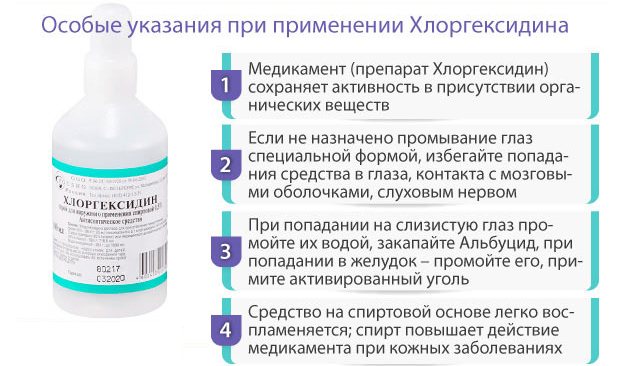
Scrub
The following composition is used to cleanse the skin:
- 1 tsp. ground coffee;
- 0.5 tsp. linseed oil;
- 0.5 tsp. antiseptic.
The components are mixed and applied to the face in a circular motion. For 2-3 minutes, perform a light massage, adhering to the lines of least stretch of the skin, leave the product for another 5-7 minutes, then wash with warm water without soap. This scrub can be used at intervals of 3-4 days.
Another recipe:
- 5 g kaolin;
- 10 ml of chlorhexidine solution;
- 3 drops of tea tree oil.
You should get a creamy mass. If it is runny, you need to add a little more clay. Apply the product to the face, lightly massaging the surface, and after 5-7 minutes wash with cool water. The presence of oily additives prevents the skin from drying out and enhances the anti-inflammatory effect of the scrub.
Masks with Chlorhexidine
These products are most suitable for oily skin. They allow you to suppress the activity of pathogenic microflora, stop the inflammatory process, cleanse the pores and ducts of the skin glands, dry out pimples, and eliminate oily sheen. They can be applied to the entire face with the exception of the lips and periorbital areas.
For dry and combination skin, it is better to use masks only on problem areas or add softening and moisturizing components to their composition:
- vegetable oils;
- sour cream;
- honey;
- aloe juice;
- glycerol;
- tocopherol, etc.
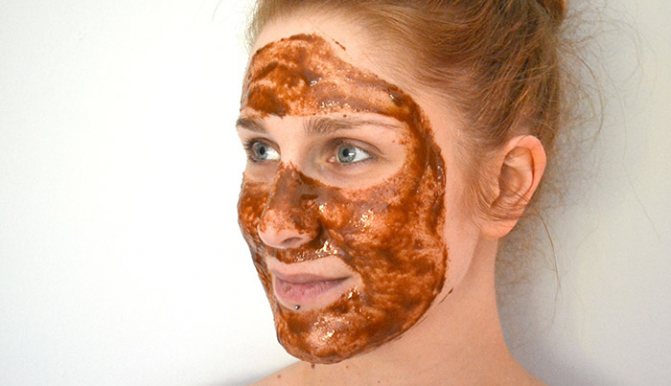
After completing the procedure, you need to lubricate the inflamed areas with an ointment or suitable cream prescribed by your doctor.
With badyaga
This mask is used to combat acne, purulent and subcutaneous pimples. Compound:
- badyaga – 15 g;
- parsley seeds – 10-15 pcs.;
- antiseptic – 8-10 drops;
- green tea;
- tea tree oil – 2 drops.
Badyaga and seeds are used in powder form. They are poured with warm tea to form a mass with the consistency of thick sour cream, then the remaining additives are added. The product is distributed on clean skin and left for 5-7 minutes. The remains are washed off with chamomile decoction and a soothing cream is applied.
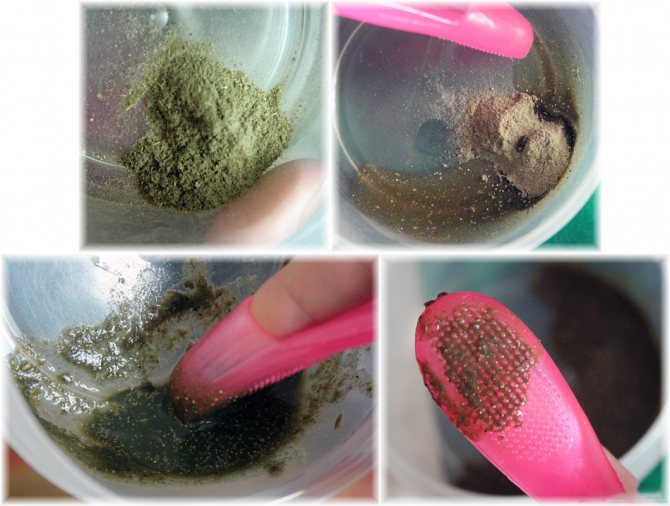
With activated carbon
Crush 2 tablets of coal in a mortar, add 0.5 tsp. Chlorhexidine and Salicylic alcohol, mix. Apply the mixture to areas covered with rashes and leave for 10 minutes. Before washing, perform a light massage. If necessary, use anti-inflammatory ointment. You can repeat the procedure after 5-7 days.
With turmeric and ginger
This composition cleanses, refreshes and tones the skin, saturates it with vitamins, improves microcirculation, helps smooth out wrinkles, and exhibits whitening properties. To prepare the mask you will need:
- turmeric – 1 tsp;
- grated ginger root – 1 tsp;
- olive oil – 0.5 tsp;
- sour cream – 1 tbsp. l.;
- disinfectant – 0.5 tsp.

Turmeric can stain the epidermis, so this recipe is used for dark skin; for lighter skin, the amount of spice is halved. After applying the product, a slight tingling sensation appears. When it becomes pronounced, the mask is washed off. The maximum permissible exposure time is 10 minutes. After the procedure, it is recommended to wipe your face with an ice cube soaked in vegetable oil.
With flaxseed
This scrub mask has an anti-inflammatory effect, gently cleanses, heals and soothes the skin. To obtain it you need:
- Pour 2 tbsp. l. ground flax seed with a small amount of warm boiled water.
- Leave the pulp for a few minutes to swell, then add 10 drops of an aqueous solution of chlorhexidine and 0.5 tsp. rosehip oil
- Just before application, add 1 tsp. ground flax seeds.
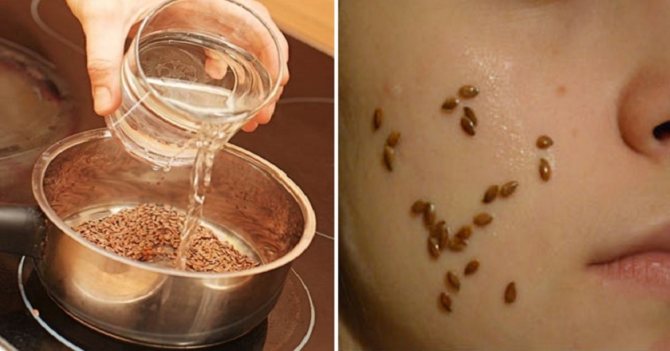
Apply the resulting product to the skin and, after gently massaging, leave for 7-10 minutes. After this, the face is rinsed with warm water, wiped with cucumber tonic and lubricated with antiseptic ointment.
Another recipe: 1 tbsp. l. whole seeds pour 1/2 cup of hot water, leave for several hours, filter the mucous mass, add 5 drops of antiseptic and linseed oil to it, mix. Apply to face and neck in several layers as it dries. The total exposure time is 15 minutes.
This mask copes well with the inflammatory process, evens out the tone, and does not cause the skin to dry out. After a course of use (about 8 procedures), a pronounced lifting effect is observed.
After salon cleaning
In order to prevent inflammation, eliminate redness, tighten enlarged pores and quickly form crusts, you can make a mask by mixing a spoonful of Chlorhexidine with approximately the same amount of cosmetic talc or baby powder, devoid of additives and flavoring. The result should be a thick paste.
Using a sponge, apply it to the face and leave until it dries. After this, the layer is shaken off by gently tapping the skin with a dry cotton pad. A white residue remains, which should not be removed for several hours. Afterwards you need to wash your face with cool water.
The product is only suitable for quickly oily skin. You can use it occasionally, applying it to the entire face or only to inflamed areas. Relief occurs soon after applying the composition. Subsequently, the skin tone is evened out, it becomes smoother and more pleasant to the touch.
To cleanse and smooth the skin
Required ingredients:
- cosmetic clay – 30 g;
- antiseptic solution – 0.5 tbsp. l.;
- Calendula decoction – 2 tbsp. l.;
- fresh sour apple juice – 1 tsp;
- essential oils of lemon and rosemary – 1 drop each;
- liquid honey – 0.5 tsp.
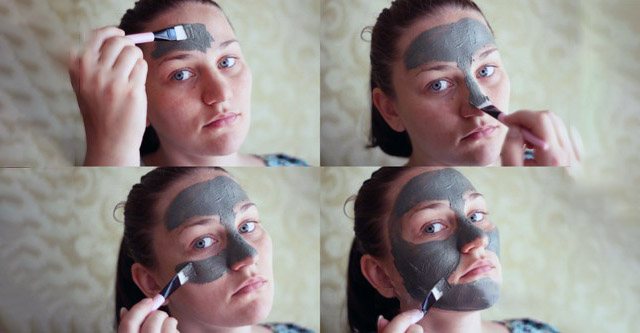
Clay is chosen according to the characteristics of the skin; white, blue or green varieties are most often used. Calendula flowers are poured with a glass of boiling water, left for 20 minutes, and the liquid is filtered. Mix the ingredients until smooth, add a little more broth if necessary. The mask is applied with a wide flat brush, spread in a thin layer, and left for 10 minutes. After washing off, the face is lubricated with cream.
The procedure is used to relieve inflammation and swelling, reduce the activity of the sebaceous glands, smooth and cleanse the surface of blackheads and dead particles, eliminate acne and marks from them. It is carried out once a week.
Anti-aging mask
A remedy obtained by mixing will help against wrinkles, inflammation and comedones:
- 2 tbsp. l. oatmeal;
- 1 tbsp. l. grape seed oils;
- 2 capsules of Aevita;
- 7-10 drops of Chlorhexidine.
The gelatin shell of the capsules must be opened, the contents squeezed out and combined with other components. If the mixture is too thick, dilute it with boiled water. After lubricating your face, leave it on for 15 minutes. Masks are made at intervals of 3-4 days. The minimum course is 6 procedures.
Chlorhexidine bigluconate - use for acne
Chlorhexidine can be mixed with other components that have a beneficial effect on problem skin, regulate the activity of the sebaceous glands, dry it out, and relieve inflammation. These are different types of clay, bodyaga, baby powder, essential and vegetable oils.
- For porous skin with numerous small rashes, a paste of blue clay and chlorhexidine solution mixed in equal proportions will help. The mask is made every other day, left for 20 minutes. A black clay mask is prepared in a similar way, but it is enough to apply it for 15 minutes.
- A 2:1 mixture of white clay and bodyagi, enriched with a few drops of chlorhexidine, helps with black comedones and promotes the resorption of post-acne scars. Keep the mask on for 10-15 minutes, and after rinsing off, apply a moisturizer.
- You can also dilute bodyaga powder with chlorhexidine 1:2, add a little clay or soda and a drop of tea tree oil.
- Baby powder is diluted with chlorhexidine to a pasty state. After complete drying, the mask should fall off on its own, leaving only a residue on the face. It is advisable to make such a mask for oily acne-prone skin at night, and wash your face only in the morning.
- For a scrub mask with a toning effect, take 2 parts of finely ground coffee, 1 part of slightly warmed shea butter and chlorhexidine solution. Massage your face for 2 minutes, rubbing the mixture, hold the mask for another 5 minutes, then rinse. This scrub mask, when performed twice a week, exfoliates dead skin particles, improves skin tone and complexion. It can be done for preventive purposes.
Reviews
Svetlana, 28 years old, Rostov-on-Don : This is an excellent antiseptic, cheap and effective. I always keep it on hand. My skin is sensitive and easily irritated, but I tolerate Chlorhexidine well. I use it as an independent remedy when acne rashes appear. It copes worse with subcutaneous pimples, although it helps reduce redness, swelling and pain at the site where such a pimple appears, even after a single use.
Daria, 25 years old, Moscow : I used this drug when inflammation appeared on my cheeks. He dealt with the inflammatory reaction in a few days, but after it the skin became dry and thinner. I won’t risk using it on my face anymore.
Diana, 19 years old, Vladivostok : Blackheads and inflamed acne appear frequently, so cleaning has to be done not only in the salon, but also at home. On the advice of a cosmetologist, I use a chlorhexidine solution for disinfection. Its application does not cause any unpleasant sensations. I am satisfied with the results: the redness goes away in a few hours, the wounds quickly heal, and there are no dark spots left in their place.
Antonina, 32 years old, Evpatoria : I have been using Chlorhexidine regularly for several years. I add it to scrubs and cleansing masks, and sometimes wipe my skin before applying night cream. It acts quite gently and has not caused any side effects during all this time. It costs a penny, but is not inferior in efficiency to expensive analogues.
Benefits and harms of the substance
Before using this remedy, you should first find out whether it is possible to wipe your face with chlorhexidine without fear, weighing the pros and cons. Chlorhexidine can not only destroy viruses and harmful bacteria, but also have a negative effect on beneficial microorganisms.
This remedy can get rid of acne, but its excessive use can cause a disruption in the natural balance of microflora.
Before treatment, you should consult your doctor about the required dosage and find out whether chlorhexidine can be used to wipe your face.
Use instead of tonic
It is not advisable to use chlorhexidine solution as a tonic. You should first think about whether it is harmful to wipe your face with chlorhexidine and whether this procedure can be done daily.
Therefore, it is better to use a special tonic to cleanse your face, which has an anti-inflammatory and moisturizing effect.
The active substances in the toner have a tonic effect on the skin pores, causing them to close. The medicine does not have this effect. Therefore, chlorhexidine is recommended for single use.

